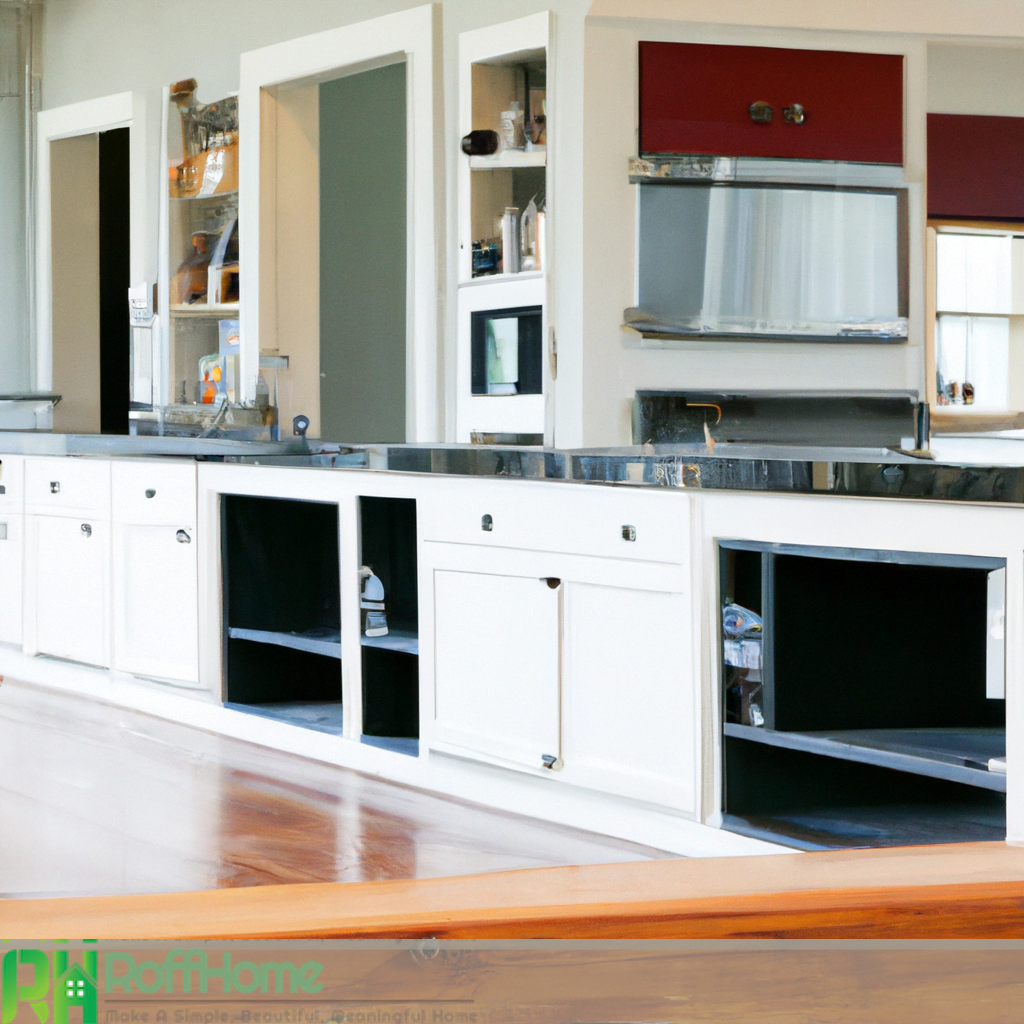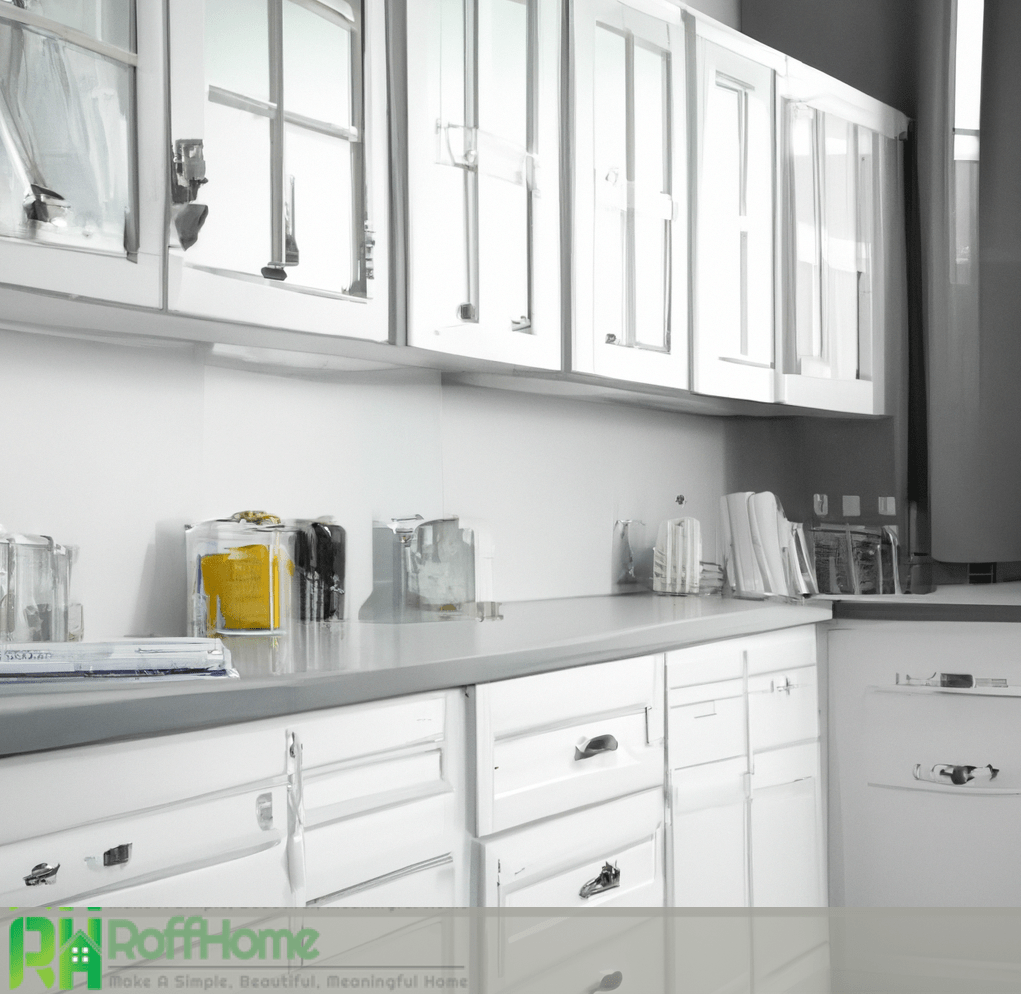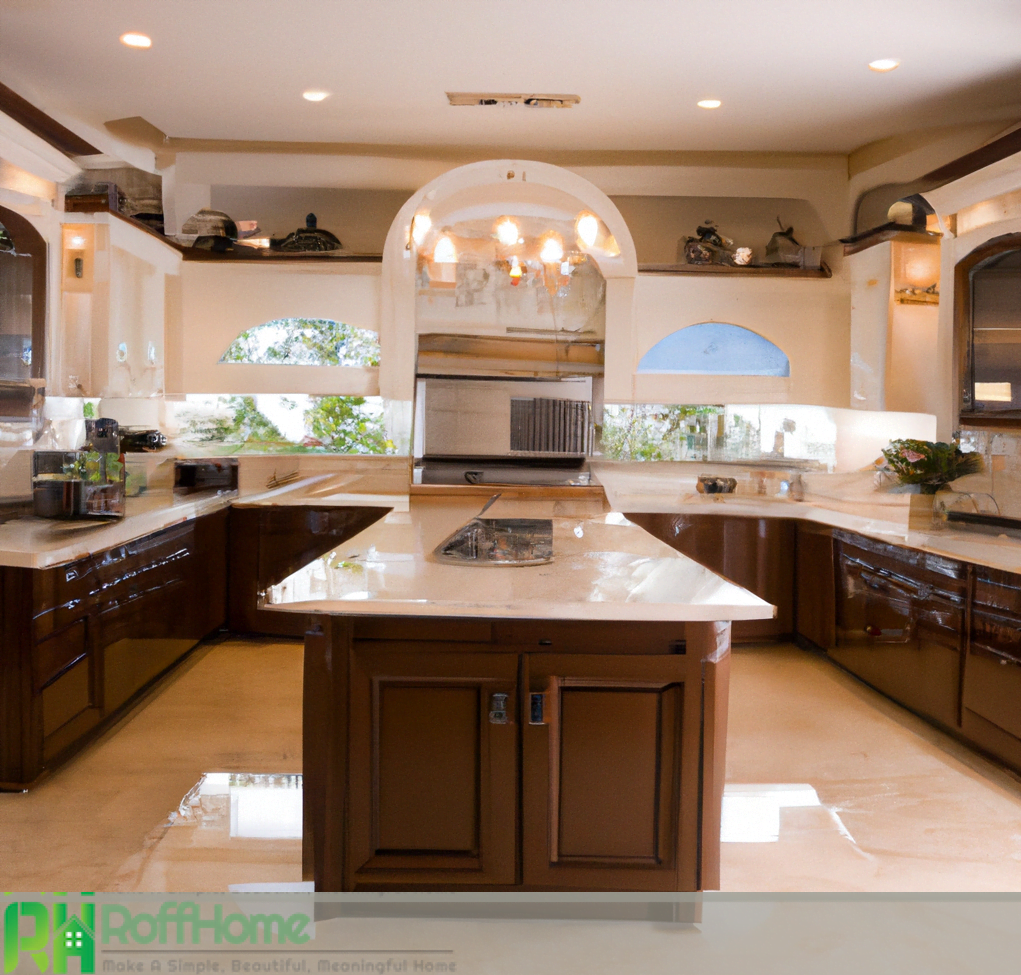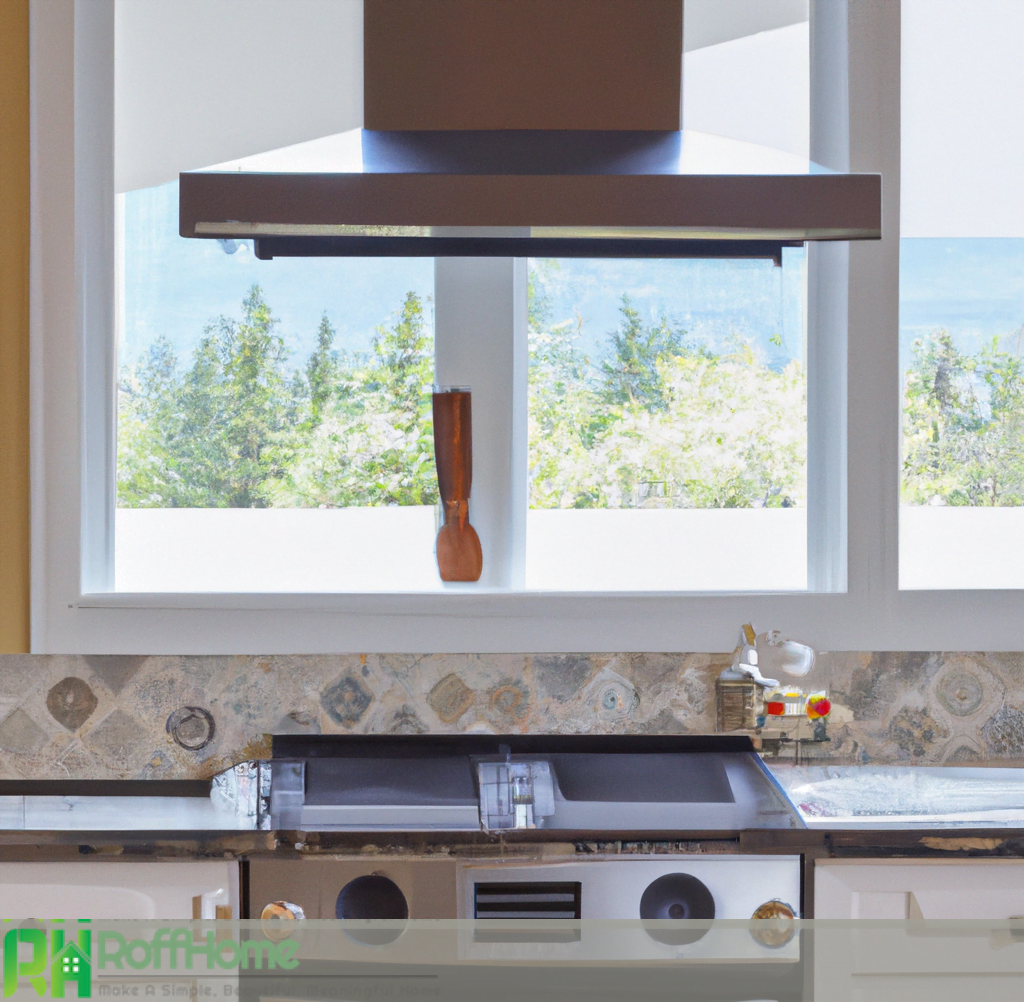Designing Your Dream Traditional Style Kitchen: Timeless Elegance and Classic Charm
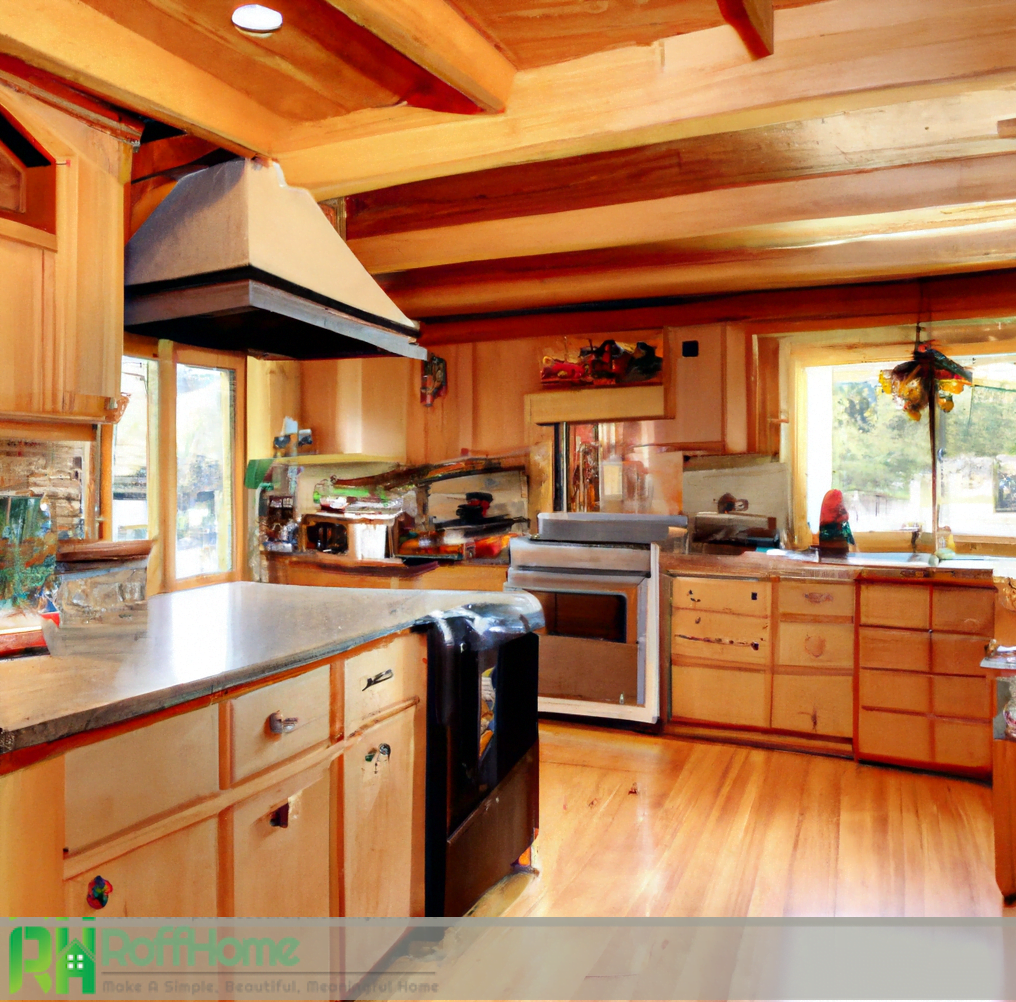
A traditional style kitchen is a timeless and classic choice for the homeowners seeking a warm and inviting atmosphere in their culinary haven. Rooted in the past yet adaptable to modern lifestyles, a traditional kitchen seamlessly blends elements of nostalgia, elegance, and functionality. This style embraces the enduring charm of yesteryears while incorporating essential features that cater to the needs of contemporary living.
When designing a traditional kitchen, careful attention is paid to every aspect, from the choice of materials to the overall layout. Standard kitchen cabinets are pivotal, showcasing rich wood finishes, intricate detailing, and ornate hardware that exude sophistication. Vintage elements are often integrated into the design, adding character and a sense of history to the space. From classic lighting fixtures to timeless color palettes and finishes, each component contributes to the overall ambiance of a traditional kitchen.
The functional aspect of a traditional-style kitchen is also highly regarded. With a focus on practicality, this style incorporates efficient kitchen appliances and fixtures that blend seamlessly into the overall design. The layout is carefully planned to optimize workflow and create a welcoming environment for cooking and entertaining.
Whether you are embarking on a kitchen renovation or remodeling project, a traditional-style kitchen balances functionality and aesthetics. It embraces the warmth and familiarity of a traditional home while infusing it with a touch of elegance and timeless charm. With careful consideration of materials, colors, and finishes, a conventional kitchen will create a beautiful space where memories are made, and culinary delights are crafted.
The Evolution of Traditional Style Kitchens: From Past to Present
The concept of a traditional style kitchen has undergone a fascinating evolution over the years, adapting to changing trends and lifestyles while preserving its timeless appeal. From humble origins rooted in practicality to become a symbol of elegance and warmth, traditional kitchens have evolved to meet the needs and the preferences of each generation.
In the past, traditional kitchens were primarily functional spaces centered around cooking and food preparation. They featured simple, sturdy cabinetry made from natural materials like wood. These kitchens often had open shelves and hooks to access utensils and cookware easily. The focus was on efficiency and functionality rather than aesthetics.
As time passed, the design of traditional-style kitchens started to incorporate elements that reflected homeowners’ changing tastes and aspirations. In the mid-20th century, traditional kitchen cabinets became more elaborate, featuring intricate detailing, raised panel doors, and ornate hardware. These embellishments added a touch of elegance and sophistication to the space.
In the 21st century, traditional style kitchens have continued evolving while embracing classic and modern influences. Today’s traditional kitchens strike a balance between timeless charm and contemporary convenience. They often feature a mix of materials, such as wood and stone, to create a harmonious blend of textures. Classic colors like white, cream, and natural tones remain popular, but bolder hues make their way into traditional kitchen designs.
The layout and functionality of traditional-style kitchens have also evolved to accommodate changing needs of modern families. Open floor plans integrating the kitchen with the dining and living areas have gained popularity, fostering a sense of togetherness and facilitating social interaction.
Technological advancements have also made their mark on traditional kitchens. Modern appliances, intelligent gadgets, and energy-efficient features have seamlessly integrated into the design, enhancing functionality while maintaining the classic aesthetic.
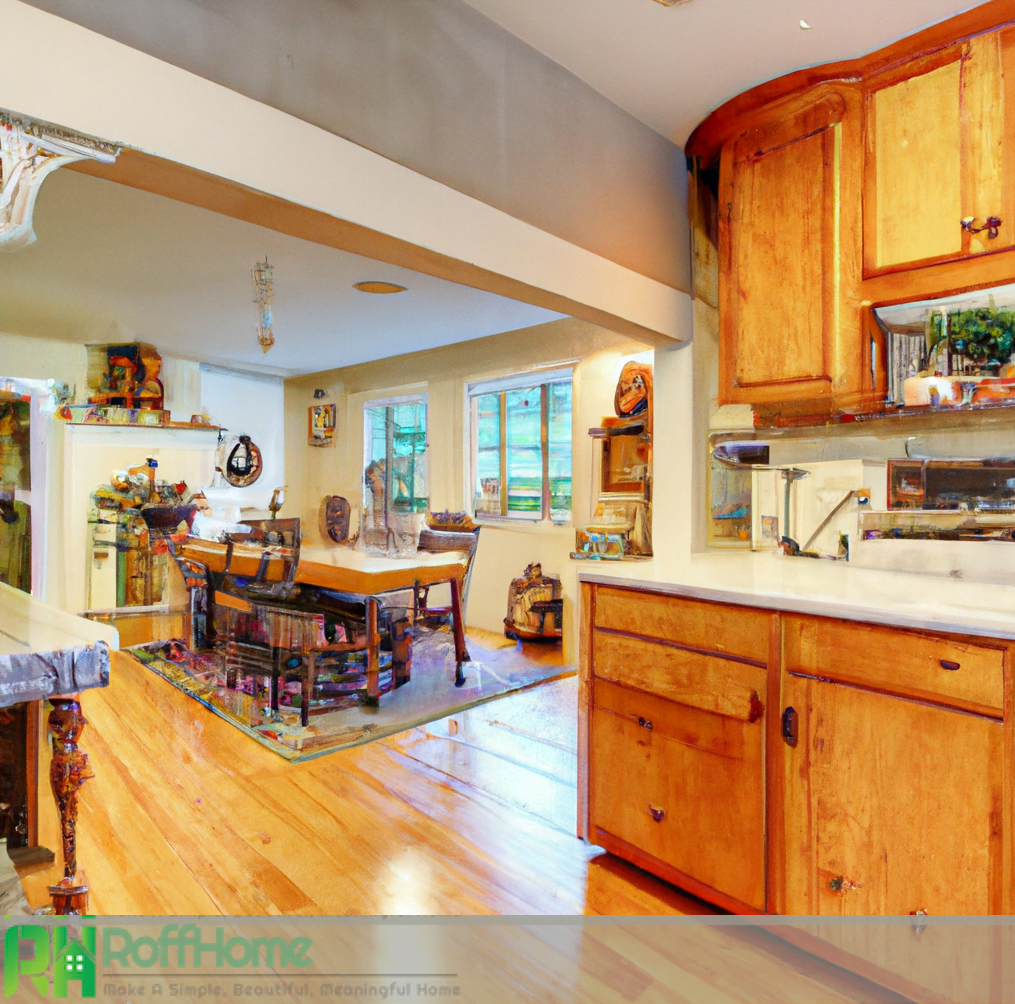
Design Elements of a Traditional Style Kitchen: Classic Features and Finishes
A traditional style kitchen is known for its timeless charm and enduring appeal. It incorporates a range of design elements that evoke a sense of nostalgia while exuding elegance and sophistication. From the choice of cabinetry to the selection of finishes, each aspect plays a crucial role in creating the quintessential traditional kitchen.
Traditional style kitchen often feature classic cabinetry as the centerpiece of the design. Wood is the material of choice, with options like oak, cherry, and maple being famous for their durability and rich, warm tones. The cabinet doors typically showcase raised panels and intricate detailing, adding depth and visual interest. Ornate hardware, such as brass or bronze handles and knobs, further enhances the traditional aesthetic.
To complement the cabinetry, traditional kitchens often incorporate other classic features. One prominent element is natural stone or quartz countertops, such as marble or granite, which provide a luxurious and timeless appeal. The backsplash is another opportunity to infuse traditional charm, with options like subway tiles, mosaic patterns, or hand-painted ceramic tiles.
Traditional kitchen flooring often leans towards natural materials like hardwood or stone. Hardwood floors with rich stains, such as oak or walnut, add warmth and depth to the space. Alternatively, stone floorings like limestone or travertine can evoke a rustic and Old-World ambiance.
Traditional kitchens also pay attention to the details. Crown molding and decorative trims are common additions to cabinetry and ceiling areas, adding an elegant touch. Wainscoting or beadboard panels on walls provide a sense of craftsmanship and can be painted in classic colors such as cream or soft pastels.
Finishes in a traditional style kitchen are chosen to enhance the overall aesthetic. Warm and neutral colors, such as cream, beige, or muted shades of blue and green, are often used on walls and cabinetry to create a soothing backdrop. Traditional kitchen may also incorporate glazing or distressing techniques to add depth and character to the finishes.
Traditional vs. Modern Kitchens: A Look at the Key Differences
The design and aesthetics of a kitchen play a significant role in defining its overall atmosphere and functionality. Two popular styles that often contrast with each other are traditional and modern kitchens. While both have unique characteristics, understanding the key differences can help homeowners determine which style best suits their preferences and lifestyle.
Traditional kitchens are known for their timeless appeal and classic elements. They embrace a warm and inviting atmosphere, often drawing inspiration from historical designs. Traditional kitchens typically feature ornate cabinetry with raised panel doors, intricate detailing, and decorative hardware. Natural materials like wood are common, and colors tend to be warm and muted, such as creams, beiges, and soft pastels. Traditional kitchens often incorporate vintage or antique elements, creating a sense of nostalgia and elegance.
On the other hand, modern kitchens are characterized by clean lines, minimalist aesthetics, and a focus on functionality. Modern kitchen design prioritizes simplicity, sleekness, and efficiency. Cabinetry in contemporary kitchens is often flat-panel with a smooth and glossy finish, commonly made from materials like laminate, glass, or metal. Colors in modern kitchens are often neutral and bold, such as black, white, or vibrant shades for accentuating focal points. Modern kitchens emphasize minimal clutter and maximize storage space with concealed or integrated appliances.
Another significant difference between traditional and modern kitchens is the use of technology. Modern kitchens embrace the latest advancements, incorporating smart appliances, touch-screen displays, and automated features for enhanced convenience. While not devoid of technology, traditional kitchens include it subtly, focusing more on conventional craftsmanship and aesthetics.
The layout and functionality of traditional and modern kitchens also differ. Traditional kitchens often have a more compartmentalized design, with different cooking, cleaning, and dining areas. On the other hand, modern kitchens favor open floor plans and integrated spaces that allow for seamless flow and social interaction.
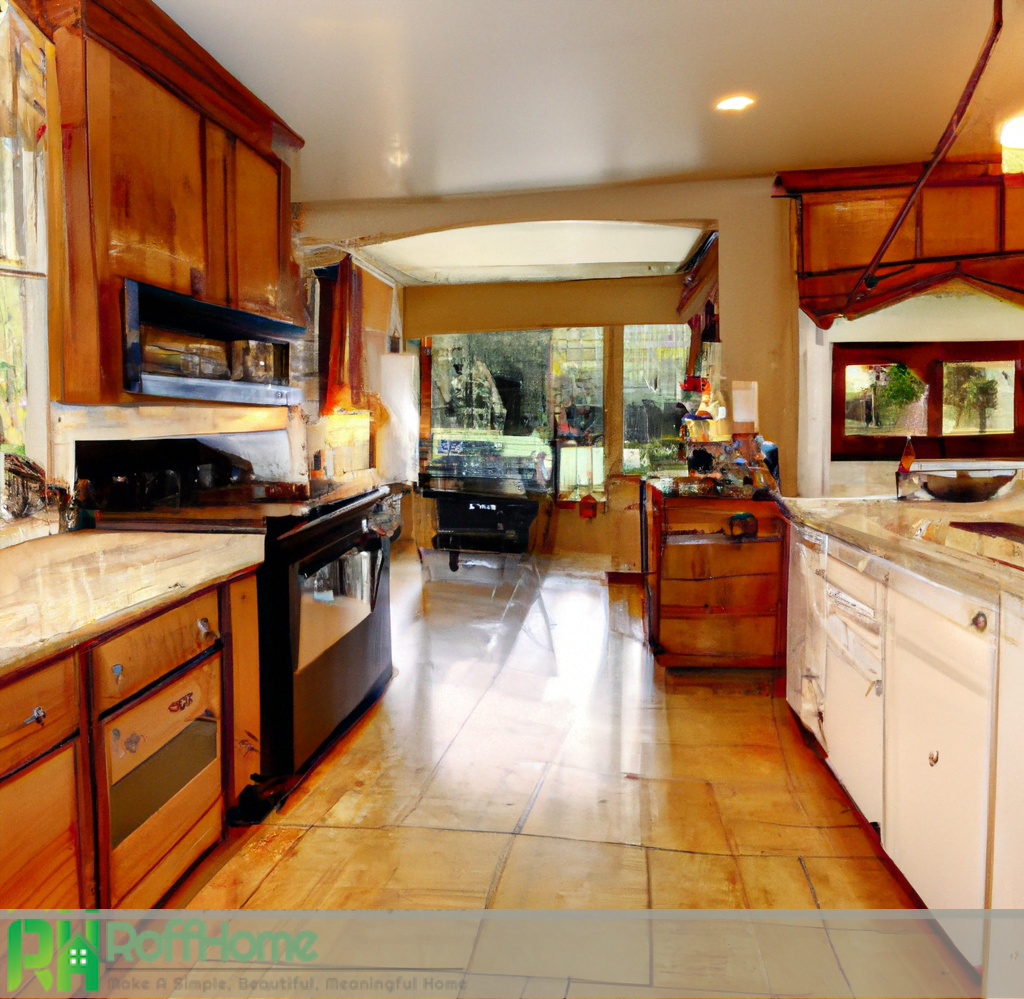
Creating a Functional and Efficient Traditional Style Kitchen Layout
Designing a traditional-style kitchen involves more than just choosing beautiful cabinetry and finishes. It also requires careful consideration of the layout to ensure the space is functional, efficient and meets the needs of everyday cooking and entertaining. Here are some key factors to consider when creating a traditional-style kitchen layout.
Work Triangle: The work triangle is a fundamental principle in kitchen design. It refers to the efficient arrangement of the three primary work areas: the refrigerator, the sink, and the stove. Maintaining a proper work triangle in a traditional kitchen layout is crucial to optimize workflow and minimize unnecessary movement.
Kitchen Island: An island can be a central feature in a traditional kitchen, providing additional workspace, storage, and a gathering spot. When incorporating an island, it’s essential to ensure enough clearance around it for comfortable movement. The island can also house appliances like a sink or cooktop, enhancing functionality and creating a convenient work zone.
Storage Solutions: Traditional kitchens often have ample cabinetry for storage. Consider incorporating a mix of deep drawers, upper cabinets, and pantry space to accommodate different kitchen items and maintain an organized and clutter-free environment. Utilize custom inserts and organizers to maximize the efficiency of cabinet storage.
Countertop Space: Ample countertop space is essential for food preparation, serving, and other kitchen tasks. Ensure sufficient counter space is near the stove for food preparation and next to the sink for easy access to water and dishwashing.
Traffic Flow: A well-designed traditional kitchen layout considers traffic flow within the space. Minimize potential bottlenecks by ensuring enough people can move comfortably and safely. Consider incorporating wide walkways and avoiding obstructions in the main traffic areas.
Lighting: Proper lighting is crucial in a functional kitchen. Incorporate a combination of task, ambient, and accent lighting to ensure sufficient illumination for food preparation, cooking, and overall ambiance. Traditional style kitchens often feature classic lighting fixtures such as pendant lights or chandeliers that add functionality and elegance to the space.
Critical Elements of Traditional Style Kitchens: A Guide to Design and Décor
Traditional-style kitchens are known for their timeless charm, elegance, and warm ambiance. Whether you’re looking to create a new conventional kitchen or renovating an existing one, understanding the critical elements of this style is essential. Here’s a guide to the design and décor elements that define traditional-style kitchens.
Cabinetry: Traditional kitchen cabinets are often the focal point of the design. Choose cabinetry with raised panel doors, intricate detailing, and decorative hardware. Wood is a popular material, with options like oak, cherry, or maple showcasing rich and warm tones.
Finishes: Traditional kitchen typically feature finishes with a sense of craftsmanship and heritage. Glazing and distressing techniques can add depth and character to cabinetry and other surfaces. Classic colors such as creams, beiges, soft pastels, or warm earth tones are commonly used.
Countertops: Natural stone countertops like marble, granite, or quartz are popular in traditional kitchen. These materials provide a luxurious and timeless appeal. Other options include butcher blocks or solid wood countertops, which can add warmth and rustic charm.
Backsplash: The backsplash is an opportunity to add visual interest and complement the cabinetry. Traditional kitchen often incorporate subway tiles, mosaic patterns, or hand-painted ceramic tiles. These choices can enhance the classic aesthetic and serve as a focal point.
Flooring: The Hardwood flooring is a classic choice for traditional kitchen. Options like oak, walnut, or cherry can add warmth and depth to the space. Stone floorings like limestone or travertine can also evoke a rustic and Old-World ambiance.
Lighting: Traditional kitchen often feature lighting fixtures contributing to the overall design and ambiance. Consider incorporating classic elements like pendant lights, chandeliers, or wall sconces. These fixtures can provide both functional illuminations and add a touch of elegance and sophistication.
Furniture and Decor: Traditional-style kitchens often incorporate furniture-like elements to enhance the overall design. Consider adding a kitchen island with decorative legs or incorporating a cozy breakfast nook with a traditional-style table and chairs. Vintage or antique pieces can also contribute to the traditional charm.
Details and Accessories: Pay attention to the kitchen’s more minor details and accessories. Crown molding, decorative trims, and corbels can add elegance and character to cabinetry and other areas. Display traditional kitchenware, such as copper cookware or vintage utensils, to enhance the classic style further.
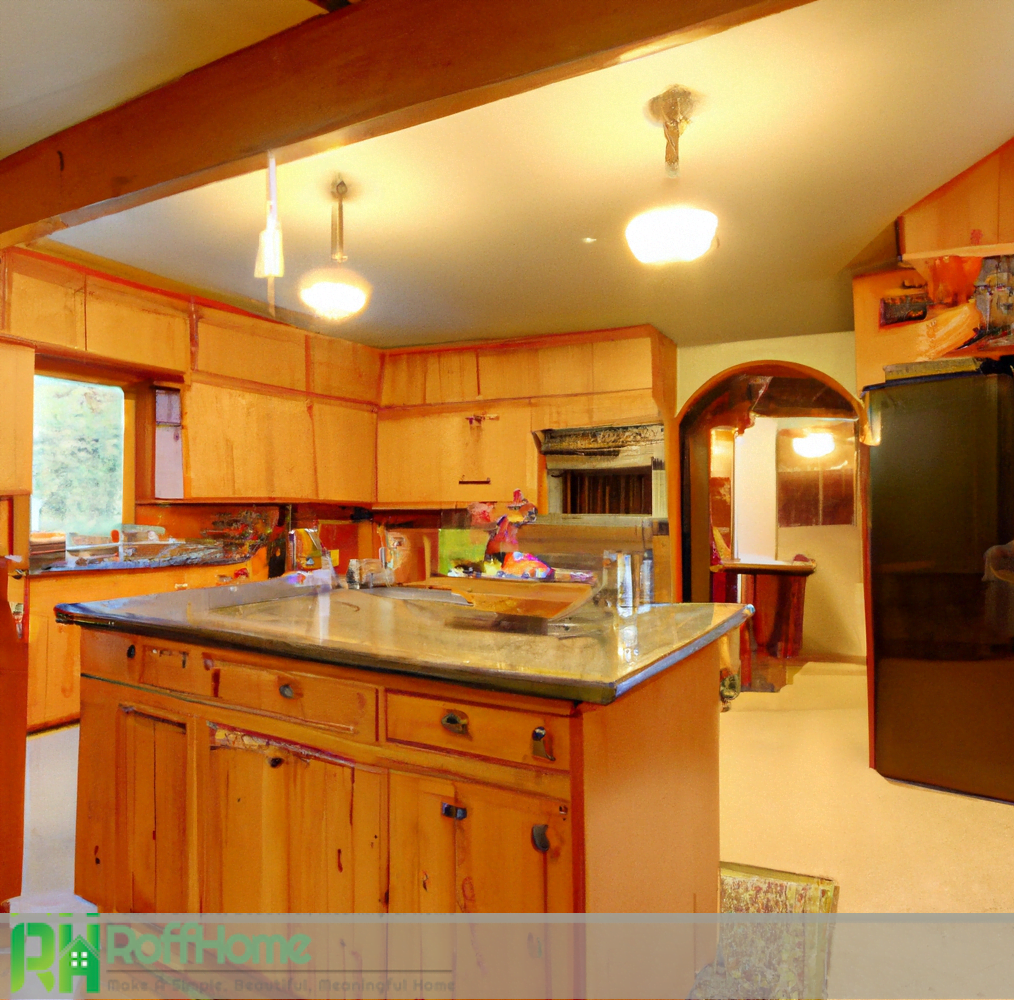
Classic Colors and Materials for Traditional Style Kitchens
The color palette and choice of materials play a significant role in defining the traditional style of a kitchen. Classic colors and materials create a warm and inviting ambiance while exuding timeless charm and elegance. Here’s a look at some key colors and materials commonly used in traditional-style kitchens.
Cream and Beige: Cream and beige are quintessential colors for traditional kitchen. These neutral tones provide a soft and warm backdrop, allowing other elements in the kitchen to shine. Cream and beige colors create a sense of tranquility and work well with various materials and finishes.
Soft Pastels: Soft pastel shades, such as pale blue, light green, or gentle pink, are typical in traditional kitchen. These colors add a touch of whimsy and a vintage vibe, evoking a sense of nostalgia and charm. Soft pastels can be used as accents or for more prominent elements like cabinetry or walls.
Warm Earth Tones: Traditional kitchen often incorporate warm earth tones like terracotta, golden yellow, or rich brown. These colors create a cozy and the inviting atmosphere reminiscent of nature’s hues. They can be used for accent walls, backsplashes, accessories, and décor elements.
Wood: Wood is a crucial material in traditional kitchen for cabinetry and flooring. Oak, cherry, maple, and walnut are famous for their rich and warm tones. Wood adds depth, character, and a sense of craftsmanship to the kitchen, enhancing its traditional appeal.
Natural Stone: Natural stone is frequently used in traditional kitchen, particularly for countertops and backsplashes. Materials like marble, granite, and quartzite provide a luxurious and timeless look. The unique veining and patterns of natural stone contribute to the elegance and sophistication of the space.
Ceramic and Porcelain: The ceramic and porcelain tiles are go-to options for flooring, backsplashes, and accent walls in traditional kitchen. These materials come in various colors, shapes, and patterns, allowing for customization and adding visual interest. Classic designs like subway tiles or intricate mosaics often enhance the traditional aesthetic.
Metals: Traditional kitchen often incorporate brass, bronze, or copper metals. These metals can be seen in the hardware, faucets, lighting fixtures, and accessories. These metals’ warm tones and patina add a touch of vintage charm and create a sense of timelessness.
Flooring Options for Traditional Style Kitchens: From Hardwood to Tile
The flooring in a traditional style kitchen plays a crucial role in setting tone and adding to the space’s overall aesthetic. Traditional kitchen often embrace a warm and inviting ambiance; choosing flooring materials is essential to achieve this desired look. Here’s an exploration of flooring options commonly used in traditional style kitchen, ranging from hardwood to tile.
Hardwood Flooring: The Hardwood flooring is a classic and timeless choice for traditional kitchen. Options like oak, cherry, maple, or walnut with rich stains add warmth, depth, and a sense of luxury to the space. The natural beauty of hardwood enhances the traditional aesthetic and complements the warm color palette often found in traditional kitchens.
Stone Flooring: Stone floorings, such as limestone, travertine, or slate, can bring a rustic and Old-World charm to a traditional kitchen. The natural variations in color and texture create a unique and organic look. Stone flooring is durable and can withstand heavy foot traffic. It provides an excellent surface underfoot, which can be especially beneficial in warmer climates. The earthy tones and natural patterns of stone flooring contribute to the traditional style kitchen and create an elegant atmosphere.
Ceramic or Porcelain Tiles: Ceramic or porcelain tiles are versatile and widely used in traditional kitchen.With their classic rectangular shape, Subway tiles are trendy and can create a timeless backdrop for a traditional kitchen. Intricate mosaic patterns or decorative tiles can also be used to add visual interest as a focal point or as an accent.
Engineered Wood: Engineered wood flooring is a more affordable alternative to solid hardwood while still providing the warmth and beauty of wood.Engineered wood is more stable to moisture, making it a suitable option for kitchens where moisture levels can fluctuate.
Renovating Kitchen in a Traditional Style: Tips and Inspiration
Remodeling a kitchen in a traditional style allows homeowners to embrace the timeless charm and create a warm and inviting space. Whether the starting from scratch or giving your existing kitchen a makeover, here are some tips and inspirations for a successful traditional kitchen renovation.
Plan the Design:
- Start by envisioning your ideal traditional kitchen.
- Consider the layout, cabinetry, countertops, flooring, and color scheme.
- Look for inspiration in magazines, online platforms, or historical homes to gather ideas and create a cohesive design plan.
Focus on Cabinetry: Traditional kitchens often feature cabinetry as a critical design element. Opt for raised panel doors, ornate detailing, and decorative hardware to achieve a classic look. Choose wood species like oak, cherry, or maple with warm finishes that add depth and character to the space.
Classic Countertops: Consider natural stone countertops like marble, granite, or quartzite to enhance the traditional aesthetic. These materials provide durability and a luxurious appeal. Alternatively, butcher blocks or solid wood countertops can add warmth and a rustic charm to the kitchen.
Warm Color Palette: Traditional kitchens typically feature a warm color palette. Consider creams, beiges, soft pastels, or warm earth tones for walls, cabinetry, and other surfaces.
Vintage-Inspired Fixtures:
- Pay attention to the fixtures and hardware in your traditional kitchen renovation.
- Choose vintage-inspired faucets, drawer pulls, and lighting fixtures that add authenticity and charm.
- Opt for brass, bronze, or copper to enhance the traditional look.
Flooring Options: Consider hardwood flooring for a classic and timeless appeal. Oak, cherry, or walnut can provide richness and warmth. If you prefer a stone look, explore options like limestone or travertine. Ceramic or porcelain tiles with classic patterns or mosaic designs can contribute to the traditional style.
Incorporate Traditional Elements: Integrate vintage or antique elements into your traditional kitchen—display vintage cookware, decorative accessories, or heirloom pieces that add character and personal touch. Be mindful of balancing these elements with functionality and avoiding clutter.
Lighting and Ambiance:
- Install lighting fixtures that align with the traditional style.
- Consider pendant lights, chandeliers, or wall sconces to add functionality and elegance.
- Incorporate dimmers or layered lighting to create various moods and ambiance in the kitchen.
Attention to Detail:
- Focus on the small details that significantly impact.
- Add crown molding, decorative trims, or corbels to cabinetry and other areas.
- Consider incorporating a decorative backsplash or a focal point that showcases intricate tile work.
Seek Professional Guidance: Engaging the services of a professional kitchen designer or contractor can ensure a successful renovation. They can help with space planning, material selection, and execution, ensuring that your traditional kitchen renovation meets your vision and functional needs.
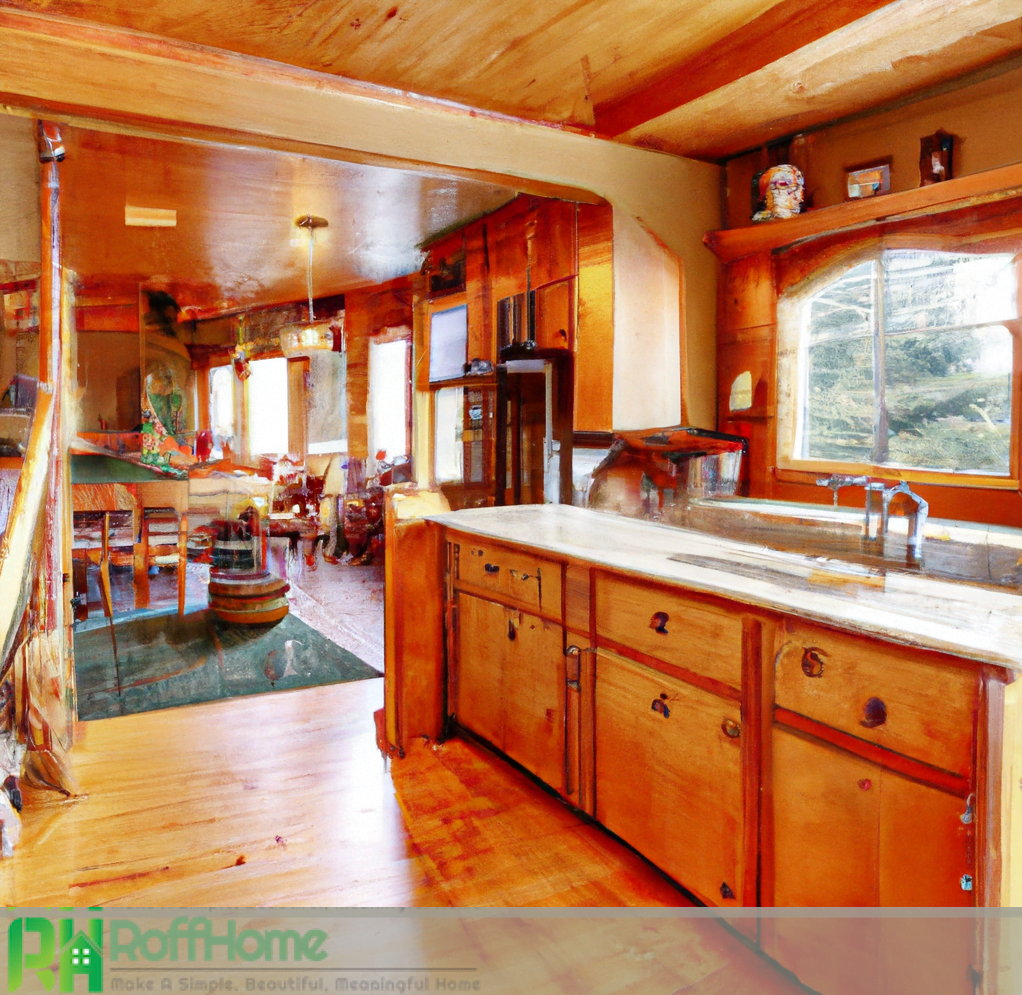
Lighting Ideas for Traditional Style Kitchens: Enhancing the Ambiance
The proper lighting can significantly enhance the ambiance of a traditional style kitchen, creating a warm and inviting atmosphere. Traditional kitchens often feature classic elements and intricate details, and the lighting choices should complement and accentuate these design elements. Here are some lighting ideas for your traditional-style kitchen to create an inviting and cozy space.
Chandeliers: The chandeliers are a popular choice for traditional kitchens as they add a touch of elegance and sophistication. Opt for a chandelier with traditional or vintage-inspired design elements, such as crystal accents or candle-style bulbs. Hang it above a kitchen island or dining area to serve as a focal point and provide ambient lighting.
Pendant Lights: Pendant lights offer a versatile lighting option for traditional style kitchens. Choose pendant lights with decorative shades or intricate metalwork to complement the conventional aesthetic. Hang them in clusters above the kitchen island or sink area to provide task lighting and add visual interest.
Wall Sconces: Wall sconces can add a soft and warm glow to the kitchen while highlighting specific areas or features. Place them on either side of a range hood, above the sink, or along the walls to create a cozy ambiance. Consider sconces with decorative details like scrollwork or fabric shades for a traditional touch.
Under Cabinet Lighting: Under cabinet lighting serves functional and aesthetic purposes in a traditional kitchen. It provides task lighting for the food preparation and adds a warm glow to the countertop area. Choose LED strip lights or puck lights to create a subtle and inviting illumination that showcases the beauty of the cabinetry.
Recessed Lighting: Recessed lighting can provide ambient lighting in a traditional kitchen. Install recessed lights strategically to distribute light throughout the space evenly. Use dimmer switches to control the intensity and create different moods and settings.
Decorative Lanterns: Incorporate decorative lanterns to add a touch of rustic charm to your traditional kitchen. Hang them above the kitchen island or dining table to create an intimate atmosphere. Lanterns with vintage-inspired designs, such as wrought iron or copper finishes, can enhance the traditional style.
Natural Light:
- Make the most of natural light in your traditional kitchen by allowing ample sunlight to enter the space.
- Opt for large windows or French doors to bring in natural light and the create an airy and bright ambiance during the day.
- Consider sheer curtains or blinds to filter the light and add privacy.
Statement Lighting Fixtures:
- Make a statement with a unique lighting fixture that becomes a focal point in your traditional kitchen.
- Look for fixtures with ornate details, intricate metalwork, or stained glass for a touch of classic elegance.
- Hang it in a prominent area to draw attention and create a dramatic effect.
In conclusion, a traditional style kitchen offers a timeless and inviting atmosphere. From classic design elements to warm color palettes, traditional materials, and carefully selected lighting, every aspect creates a space that exudes charm, elegance, and a sense of comfort for all to enjoy.

